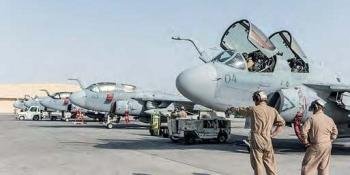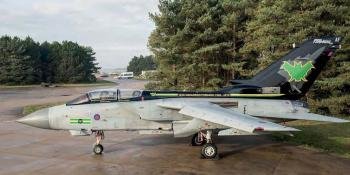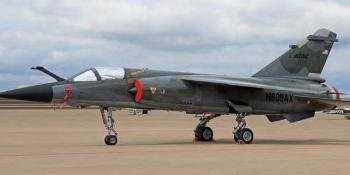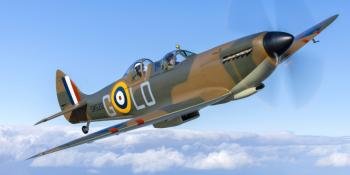
THE LARGE aerospace trade events are like staging posts through the years, markers along the path of the industry’s ongoing development.
This year’s big industry showcase at Farnborough in mid-July, takes place at an interesting time. The two major commercial aircraft original equipment manufacturers (OEMs), Airbus and Boeing, both have brimming orders backlogs, but fuel prices are climbing once again and decisions on replacements for some aircraft are looming, opening the possibility for new business.
Production slots for most of the products from Airbus and Boeing are booked out well into the future, thanks to the time earlier this decade when each company pulled in ever increasing orders totals each year, culminating with the 2014 total of 2,888 aircraft (1,456 Airbus, 1,432 Boeing), the most orders ever received by the big two OEMs in a single year. (The 2014 total edged the previous record of 2,754 aircraft set in 2007.)
There were a couple of years where the orders rate dropped off (1,848 orders in 2015 and 1,399 in 2016, although orders rose again to 2,021 in 2017 with 1,109 Airbus and 912 Boeing). The slowdown happened because customers’ immediate needs had been satisfied, full production slots meant availability was pushed into the future, and there was a changing macroeconomic picture. Just as rising oil prices from the late 2000s fuelled orders for newer aircraft, as oil fell from its peak price of $120/ barrel in 2012 (down to below $60/barrel by 2016, according to International Air Transport Association’s (IATA) Jet Fuel Price Monitor), so the rush for fresh equipment slowed as it became less urgent to replace older, less efficient jets.
Now, oil is back up at above $90/barrel, its highest price for four years. Should prices remain at a higher level or rise further, it seems inevitable demand will pick up again for more efficient new aircraft.
During the annual IATA Annual General Meeting in June, Reuters quoted Boeing Commercial Airplanes Vice-President Marketing Randy Tinseth as saying: “When you take a look at where the price of fuel is today …it means replacement economics make more sense for our customers.”
Inevitably, operators with less fuel-efficient equipment, especially aircraft delivered from the mid-1990s to the early 2000s, will have to think about how they will replace ageing fleets with newer aircraft to arrive in the next decade.
As explained in the separate feature in this issue, some airlines have already taken re-fleeting decisions on widebody twin-aisle aircraft. There will be continued opportunities in the widebody market, but this is far from the only area where there will be replacement requirements.
One segment that stands out is the so-called middle of the market for aircraft sized between the highest-capacity single-aisle types and the smallest-capacity twin-aisles, the airliners which, broadly speaking, carry 220 to 280 passengers and can fly transcontinental and some intercontinental services.
With the Boeing 757s and Boeing 767s and legacy Airbus A330s that currently serve this market becoming older, there will over the coming years be a need to restock and this makes the midmarket segment a likely focal point for future competition between the big OEMs.
At last year’s Paris Air Show, Boeing spoke about a configuration study for a New Mid-market Airplane (NMA) featuring a hybrid cross-section, new-generation engines, composites and technologies transferred from the 787 for delivery to the market in the mid-2020s. Some in the industry dubbed the concept the ‘797’, although Boeing itself hasn’t referred to it as such.
Since then, there has been little further official word from Boeing about the concept, although executives from major airlines such as Delta, United and Qantas have all been quoted publicly in recent months as saying they’d be interested in such a jet. In June, Tinseth said Boeing has held discussions with more than 50 airlines who “liked the efficiency” of the NMA design.
There has been speculation Boeing could announce an authority to offer a new midsize jet this year, but Boeing has played down the possibility. Tinseth said during the IATA AGM: “We are in no rush to make a decision.”
Still, rising oil prices likely means the need for a newgeneration midsize aircraft offering cost savings could be drawn into sharper focus, so analysts will therefore monitor Farnborough to see if Boeing gives any more updates.
They will also be watching to see if there’s any news in this area from Airbus, although the company has said the combination of the A321neo (the new A321LR long-range variant, due for service entry later this year, is specifically designed for 757 replacement needs) and the A330-800neo means it has the segment covered.
Farnborough will also be watched to see if there are any announcements with other commercial fixed-wing aircraft. Airbus’ acquisition of a majority 50.01% stake in the Bombardier C Series single-aisle airliner has recently been approved (the European manufacturer was due to take control of the jet on July 1) so analysts will be interested to see if there are any further announcements on this programme. There have been reports Airbus is considering renaming the C Series as the A200 to fit in with his aircraft designations nomenclature once the deal is finalised, and that some American carriers could be interested in buying the aircraft.







